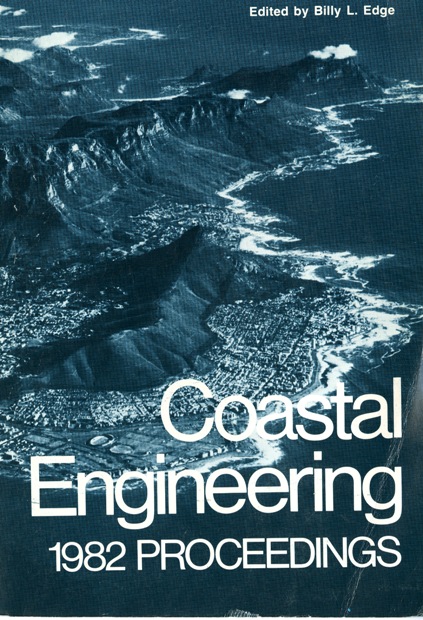Abstract
When a wave propagates over a rippled bed, organized vortices are generated over the leeside slope of crest. They are shedded, collapse and finally supply energy to turbulence in the vicinity of bed. This process plays an important role in the sediment transportation and suspension due to waves. However, quantative measurements of this phenomena have been limited because of some difficulties. Horikawa and Watanabe(1970) developed the electrolytic transducer and measured the turbulence over a rippled bed. Nakato, Locher, Glover and Kennedy(1977) used a hot-film anemometer controlled by a minicomputer and conducted a phase averaging sampling. One of the authors(1980) tried a phase averaging sampling of velocity field over an artificial ripple by a hot-film anemometer. Du Toit and Sleath(198l) used a He-Ne laser-Doppler anemometer to measure the velocity over artificial and selfformed ripples. Those are the principal contributions in this problem. One of the difficulties depends on a velocity meter. A hot-film anemometer which is widely used to measure turbulence in an unidirectional flow has some weakness under the circumstances of sediment suspension. Another difficulty lies on a data processing. Because the oscillatory flow turbulence is unsteady process, we can not utilize an analogue data processing technique which is very useful for a steady flow and are forced to handle a large number of digital data. In the experiments reported here, a laser-Doppler anemometer was introduced in order to overcome a first difficulty. The second one was solved by the combination of a wave-form-recorder-analyser and the desktop computer. The results show the good correlation of the turbulence variation and the movement of shedded vortices. Theoretical considerations on the time averaged turbulence are also presented.
Authors retain copyright and grant the Proceedings right of first publication with the work simultaneously licensed under a Creative Commons Attribution License that allows others to share the work with an acknowledgement of the work's authorship and initial publication in this Proceedings.

